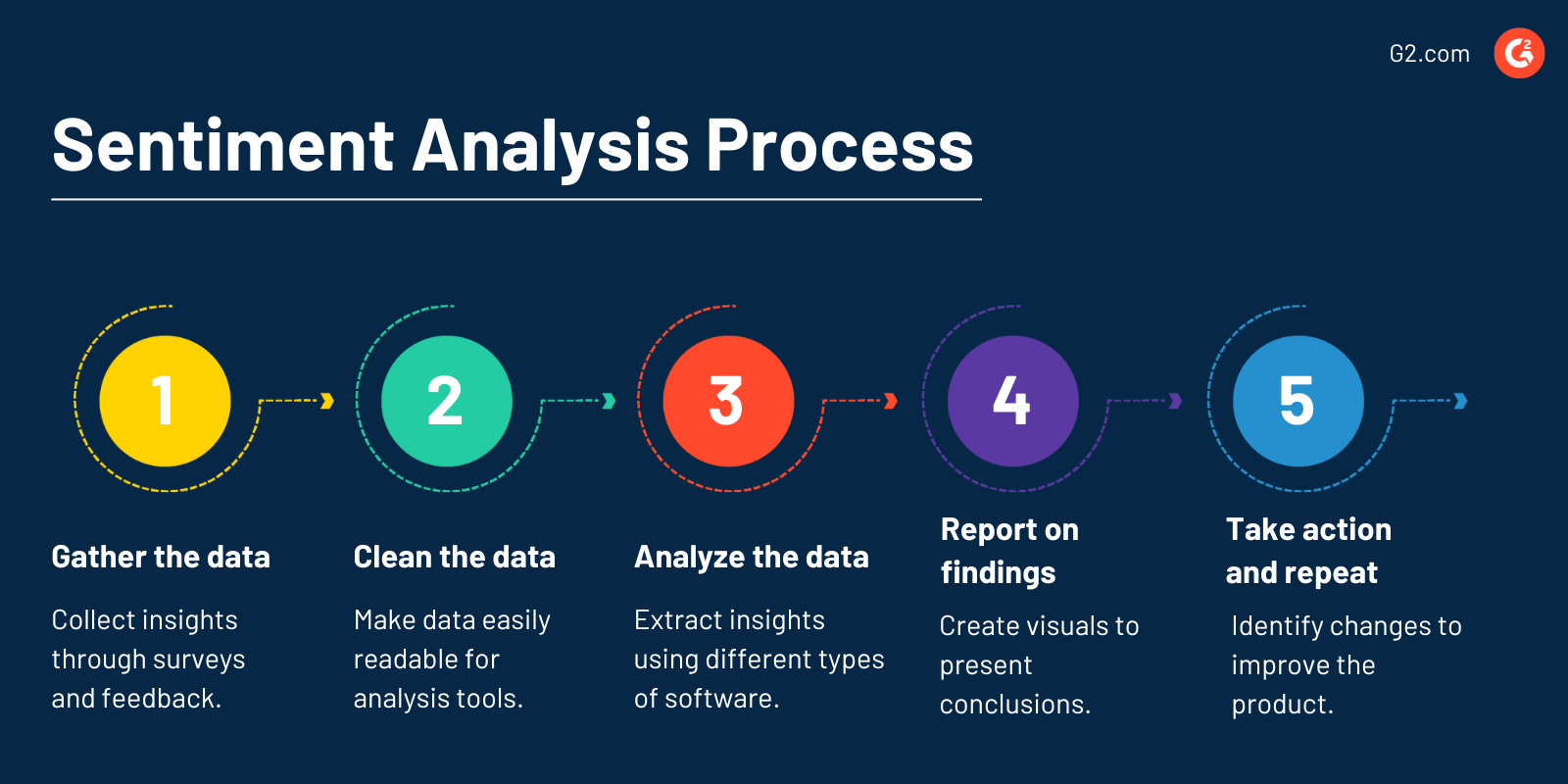What is sentiment analysis?
Sentiment analysis, or opinion mining, identifies and detects positive, negative, and neutral sentiments in text. Businesses use natural language processing (NLP), text analysis, and computational linguistics to categorize opinions about their products and services. Sentiment analysis is particularly valuable for understanding customer feedback.
Some teams use natural language understanding (NLU) to understand text with the help of machine learning algorithms. Use cases include chatbots and social media monitoring software.
Types of sentiment analysis
Different types of sentiment analysis make it easier for companies to meet their goals when analyzing text. Some common types include:
- Graded sentiment analysis, also known as fine-grained analysis, assigns a grade to content or text on a given scale. This provides an opportunity to use varying scales to offer insight at different levels. For example, teams could use a 1-5 or 1-10 scale, offering more detailed definitions for deeper insights.
- Emotion detection detects different emotions in text, such as happiness or frustration. Companies use emotion detection to account for more complex customer responses outside the typical negative to positive rankings.
- Aspect-based sentiment analysis determines how customers feel about a particular service or product component. This helps understand the customer perspective at a granular level, rather than looking at the overall customer rankings.
- Intent analysis focuses on the intent of the prospect or customer. Businesses use this information to understand whether an individual is interested in purchasing a product.
Benefits of sentiment analysis
Sentiment analysis offers many benefits for businesses, including:
- Improved customer service. When teams analyze customer complaints, comments, feedback, and reviews, they find ways to improve customer service and enhance the customer experience.
- Deeper relationships with customers. Opinion mining supplies businesses with insight into customer behavior and strengthens customer relationships. Additionally, sentiment analysis helps companies understand what resonates with customers for planning purposes.
- Strategic crisis management. Businesses rely on sentiment analysis to navigate potential public relations disasters that could damage their brand image and reputation. It equips companies to stay on top of negative reviews and comments on social media or in the news.
Challenges of sentiment analysis
While sentiment analysis can be valuable, challenges also arise.
- The polarity of terms. Businesses typically look for positive and negative statements when conducting sentiment analysis. Sometimes this is easy to identify, but other times middle-of-the-road or average sentiments are harder to include in scoring.
- Interpretation of tone, like irony and sarcasm. Determining the tone of written text is not a cut-and-dry process. Sentiment analysis tools can’t necessarily distinguish between a sarcastic negative sentiment and a positive one. This can complicate scoring and lead to mislabeling of texts.
- Inability to distinguish fake reviews. Bot-generated or fake review content concerns many businesses. Sentiment analysis tools may be unable to differentiate between fabricated and legitimate content, which could overly influence sentiment scores.
Steps for implementing a sentiment analysis process
For the most effective results, businesses must develop a sentiment analysis process that fits their unique needs, but some steps can help every team get started.

- Gather the data. Businesses should determine which customer data sets are relevant to their analysis. Gathering insights through surveys and feedback to obtain additional insights and sentiments for analysis is wise at this step.
- Clean the data. Companies must clean the data and make it more easily readable for sentiment analysis tools. This includes addressing emojis and removing punctuation.
- Analyze the data. Types of analyses vary depending on the needs of the business, but different tools like natural language processing, text analysis software, and machine learning can extract insights.
- Report on the findings. Creating visuals to present conclusions from the sentiment analysis reassures key stakeholders. Teams should review insights and determine the next steps accordingly.
- Take action on the findings and repeat the process. Identifying changes to improve the product and customer experience is essential to sentiment analysis. Using the conclusions of the analysis, teams should create a plan, implement changes, and continue the process to better customer satisfaction over time.
Social media monitoring is a great way to gather feedback and get a pulse of customer sentiments.

Alyssa Towns
Alyssa Towns works in communications and change management and is a freelance writer for G2. She mainly writes SaaS, productivity, and career-adjacent content. In her spare time, Alyssa is either enjoying a new restaurant with her husband, playing with her Bengal cats Yeti and Yowie, adventuring outdoors, or reading a book from her TBR list.

